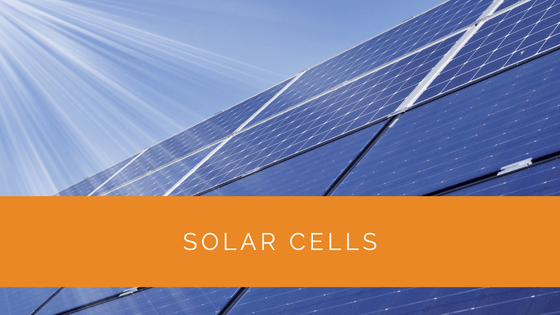Increasing global warming has made us all conscious of reducing our carbon footprint. To this end, people are now gradually shifting to renewable energy. In this way, solar energy has steadily gained massive popularity.
Solar panel systems, also known as photovoltaics, convert the sun’s energy into electricity that we use. Solar cells are a solar panel component that converts sunlight into usable energy.
Please continue reading to learn more about these photovoltaic cells and their various types, and maintain them for extended periods.
Contents
- 1 Key Takeaways
- 2 How Do Solar Panel Systems Work?
- 3 Semiconductor Materials Used in PV Cells
- 4 Types of Solar Cells
- 5 Maintaining a Solar Panel System
- 6 Case Study: Enhancing Solar Efficiency with Advanced Solar Cell Technology
- 7 Expert Insights From Our Solar Panel Installers About Solar Cells
- 8 Discover the Power of Solar with Solar Panels Network
- 9 Wrapping Up
Key Takeaways
- Solar panel systems, also known as photovoltaics, convert sunlight into electricity and have gained massive popularity as a renewable energy source in response to global warming.
- Different semiconductor materials, such as silicon and thin film, are used in solar cells, each with its characteristics and efficiencies.
- Various types of solar cells, including perovskite, dye-sensitised, quantum dots, organic, adaptive, and multijunction cells, offer unique advantages and are under development or practical use. Maintenance, including panel cleaning and proper positioning, is crucial for their long lifespan.
How Do Solar Panel Systems Work?
Solar panel systems consist of photoelectric cells made of semi-conducting material. When sunlight falls on this material, an electricity flow is created.
The photovoltaic or solar cells have three major operations:
- Absorbing light and creating electron-hole pairs
- Separating opposite charge carriers
- Extracting the separated carriers to an external circuit
Solar power can be created by both solar cells and solar collectors. A solar collector absorbs sunlight to create heat directly or generate electrical power. Alternately, a photo-electrolytic cell can refer to a PV cell and a device that uses solar illumination. The latter splits the hydrogen and oxygen molecules of water.
Moreover, solar PV systems can generate electricity even on cloudy days when they do not receive direct sunlight. However, the more sunlight they receive, the more electricity they produce.
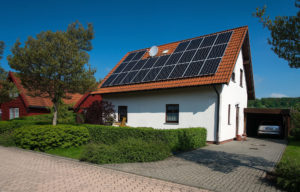
Semiconductor Materials Used in PV Cells
A surface may either absorb light, reflect it or allow it to pass through. The same applies to solar cells. These materials are less effective than conductors such as metals since these are only ‘semiconductors.
Some of the semiconductor materials used in solar cells are silicon and thin film; let us look at their specific type of materials:
Silicon
Silicon can safely be termed the most common material used for this purpose. Almost 95% of solar panels sold are made of this semiconductor material. Interestingly, after oxygen, silicon is found most abundantly on Earth. Silicon atoms connect to create a crystal lattice that makes up all crystalline silicon cells. Notably, these solar cells are highly efficient, costless, and long-lived. The most common silicon semiconductors available in the market are as follows:
Crystalline Silicon
Commonly known as solar-grade silicon, this material is widely prevalent in solar panels. Based on the crystal size and other factors, these can be divided into multiple categories – ribbon, ingot, and wafers.
Monocrystalline Silicon
Monocrystalline panels are generally more efficient because of their single-crystal composition. On the other hand, multi-crystal cells do not allow electrons to move as freely as in single-crystal cells.
Polycrystalline Silicon
It is also known as multi-crystalline silicon. It is most commonly utilised in a photovoltaic cell, considerably less expensive and less efficient than its monocrystalline counterpart.
Ribbon Silicon
Ribbon silicon is a polycrystalline silicon variation and is cheaper to manufacture than multi-crystalline cells. The production of these cells does not generate much silicon waste. However, it is not that efficient.
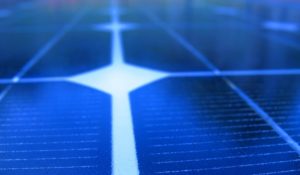
Thin Film
Thin-film solar panels are made by gathering multiple thin layers of appropriate PV panel material. These layers are either placed on or sandwiched between layers of glass, metal, or, at times, plastic. For better output, thin-film panels must be better protected than their silicon counterparts. The most common thin-layer semiconductors available in the market are as follows:
Copper Indium Gallium Selenide
This semiconductor material is the most efficient among other thin-film options. When studied in the lab, it is suitable for solar PV panels. Although, when it comes to manufacturing, it is very complicated to translate this from the lab for practical use.
Cadmium Telluride
Comparable to silicon solar panels in terms of cost, cadmium telluride is the second most used material after silicon. Although the manufacturing process is inexpensive, its efficiency has not evolved.
Gallium Arsenide
This is one of the most expensive semiconductor materials in the world. However, these are high-efficiency solar cells. Gallium arsenide solar panels are also used on spaceships since efficiency is more important than cost. These panels also maintain high efficiency even during high temperatures, even though they are heat-sensitive.
Silicon Thin Film
It can be of 3 types. One is amorphous silicon, which is composed of non-crystallised silicon. It absorbs a more significant part of the visible range of the solar spectrum than crystalline silicon. The other two are nanocrystalline silicon and proto-crystalline silicon. A combination of these two is well-suited for an open circuit voltage.
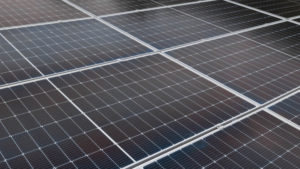
Types of Solar Cells
While some cells are designed to absorb sunlight that reaches the Earth’s surface, others are intended to be used in space.
Some solar cells are made from thin-film technologies, also known as emerging photovoltaics. These cells are currently in the development stage. Other types of solar cells are as follows:
Perovskite Solar Cells
Easy to assemble, these cells are similar to crystalline silicon cells in terms of efficiency. They can be called thin-film cells built with multiple layers of material. These multiple layers are then coated or vacuum-pressed onto a base layer called the substrate. Perovskite cells are being developed to make them durable enough to perform for 20 years.
Dye-Sensitised Solar Cells
These solar cells can be manufactured in a DIY manner with low-cost materials. Moreover, the efficiency of converting sunlight into electricity is better for thin-film cells than dye-sensitised cells. However, these cells’ price-to-performance ratio is good enough to compete with fossil fuels’ electrical power.
Quantum Dots
Quantum dot cells in a solar PV system are made of multiple semiconductor materials separated by nanometers. The electricity produced is conducted through these quantum dots.
Organic Photovoltaics
A photovoltaic system containing organic cells is made of thin films. Each film is made of organic materials such as polymers. The only downside to this cell type is that the energy conversion rate is very low compared to cells made of inorganic materials. Very few organic photovoltaics are currently in practical use.
Adaptive Cells
These cells have flexible adaptive and reflecting features influenced by environmental conditions. It reacts based on the angle and intensity of the solar radiation that hits its surface; where the sunlight hits the surface with the most power, the cell surface switches from reflecting to adaptive. Thus allowing the sunlight to penetrate. Meanwhile, the other cells of the solar PV panel continue being reflective to retain the light that has been absorbed.
Multijunction Cells
These cells are made by layering multiple thin films of varying semiconductor materials to produce electricity. Since each layer is different, the bandgap energy varies for each. Therefore, each layer absorbs differing parts of the solar spectrum.
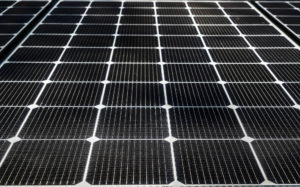
Maintaining a Solar Panel System
A solar system needs proper and regular maintenance. The first step is to ensure trees and other buildings do not shadow it. Secondly, regularly clean the panels to maintain efficiency and unblock the surface.
Tip: Set up your solar panels at a 15-degree angle so that rain can clean any debris that might build upon them. This holds especially true for a ground-mounted solar array.
Solar panels have a long life spanning over 25 years at the minimum. The inverter might be required to be replaced sooner. Usually, inverters come with a 5-year warranty. You can pay more and get it extended to 15 years.
Case Study: Enhancing Solar Efficiency with Advanced Solar Cell Technology
Background
At Solar Panels Network, we are committed to delivering top-tier solar solutions that maximise energy efficiency and sustainability. This case study highlights a recent project where we implemented advanced solar cell technology to enhance the performance of a residential solar PV system.
Project Overview
The homeowners, residing in a suburban area with ample sunlight, sought to upgrade their existing solar PV system to increase efficiency and energy output. Their goal was to reduce their carbon footprint further and maximise their return on investment. Our team was tasked with recommending the best solar cell technology and implementing the system upgrade.
Implementation
We focused on the following key aspects to ensure the project’s success:
Solar Cell Selection: Recommended monocrystalline silicon cells due to their high efficiency and long lifespan, ideal for the available roof space.
System Design: Designed a system layout that optimised panel placement for maximum sunlight exposure throughout the day, taking into account the local climatic conditions.
Inverter and Battery Integration: Upgraded the inverter to a high-efficiency model and added a lithium-ion battery for better energy storage and management.
Maintenance Plan: Developed a comprehensive maintenance plan to ensure the system’s longevity, including regular panel cleaning and monitoring of system performance.
Results
- Increased Efficiency: The new system achieved a 20% increase in energy output, significantly improving the home’s energy independence.
- Enhanced Durability: The use of high-quality monocrystalline silicon cells and a robust inverter system ensured long-term durability and reduced maintenance costs.
- Environmental Impact: The homeowners reported a notable reduction in their carbon footprint, aligning with their sustainability goals.
Summary
This case study illustrates the critical role that advanced solar cell technology plays in enhancing the efficiency and sustainability of solar PV systems. By carefully selecting high-quality materials and optimising system design, we were able to significantly boost the energy output and longevity of the system. At Solar Panels Network, we continue to push the boundaries of renewable energy solutions, ensuring that our clients benefit from cutting-edge technology and expert installation practices.
Expert Insights From Our Solar Panel Installers About Solar Cells
Solar cells are the cornerstone of any photovoltaic system, and choosing the right type can significantly impact your system’s efficiency and longevity. For instance, monocrystalline cells, while more expensive, offer higher efficiency and are ideal for installations with limited space.
Lead Solar Technician
Maintaining your solar panels is crucial for sustained performance. Regular cleaning, especially for ground-mounted panels, ensures that the surface remains free of debris, allowing maximum sunlight absorption.
Senior Solar Maintenance Specialist
The semiconductor material in your solar cells is key to their performance. For those looking for cost-effective options, polycrystalline silicon offers a good balance between price and efficiency, making it a popular choice for residential installations.
Renewable Energy Consultant
Discover the Power of Solar with Solar Panels Network
Are you navigating the world of solar installations? Look no further than Solar Panels Network, the UK’s trusted partner in harnessing the sun’s potential. Our dedication goes beyond just installations; we’re on a mission to transform how homeowners and businesses across the UK perceive and utilise energy. By choosing us, you’re reducing your carbon footprint and making a smart financial move that promises savings for years ahead. Contact us today and embark on your solar journey.
Wrapping Up
Installing solar panels is not all about getting the proper return on investment. It is more about consciously using renewable energy, which is the right thing to do today. It is time we all worked towards reducing our carbon footprint.
Carbon emissions in the UK have seen a decrease over recent years. By taking the simple step of installing a solar PV system, you can further reduce emissions. With fossil fuel reserves depleting rapidly, switching to renewable technologies has become inevitable. The simple switch to solar energy can significantly help reduce electricity bills.
When installing a system, the first step is ensuring you have enough roof space. Secondly, to generate solar electricity, ensure that the installer is a member of the solar trade association.
About the Author
Solar Panels Network stands at the forefront of solar energy solutions, driven by a team of seasoned solar engineers and energy consultants. With over decades of experience in delivering high-quality solar installations and maintenance, we are committed to promoting sustainable energy through customer-centric, tailored solutions. Our articles reflect this commitment, crafted collaboratively by experts to provide accurate, up-to-date insights into solar technology, ensuring our readers are well-informed and empowered in their solar energy decisions.

